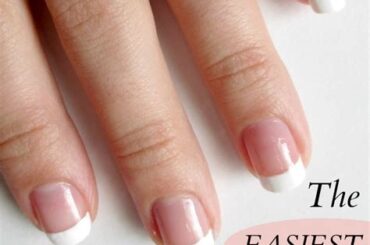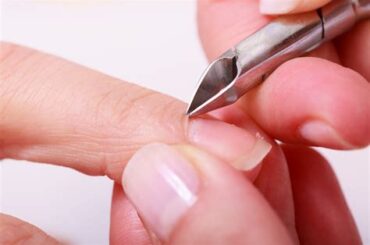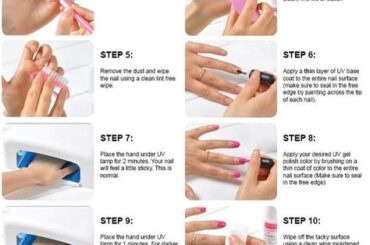Maintaining healthy nails is not only important for aesthetic reasons, but it also reflects our overall health and well-being. In this ultimate guide to nail health, we will explore the various common problems that people encounter with their nails and provide practical solutions to address them. From understanding the anatomy of our nails to tackling issues such as brittle nails, discoloration, infections, and ridges, we will delve into the causes and remedies for these concerns. Additionally, we will discuss the importance of cuticle care and provide tips for strengthening weak nails. Whether you’re dealing with splitting nails, yellow nails, or trying to break the habit of nail biting, this comprehensive guide will equip you with the knowledge and tools to maintain healthy and beautiful nails. Join us as we embark on this journey to achieving optimal nail health.
Nail Anatomy: Understanding the Structure
Understanding the nail anatomy is essential for maintaining healthy and strong nails. The nail is composed of several parts, including the nail plate, nail bed, cuticle, and nail fold. The nail plate is the visible part of the nail, while the nail bed is the skin beneath it. The cuticle is the layer of skin that protects the nail matrix, and the nail fold is the skin that surrounds the nail plate.
The nail plate is made up of keratin, a type of protein that forms the structure of the nail. It is important to keep the nail plate hydrated to prevent brittleness and breakage. The nail bed contains blood vessels and nerves that supply nutrients to the nail matrix, promoting nail growth. The cuticle acts as a barrier, protecting the nail matrix from infection and damage.
Understanding the nail anatomy can help in identifying any issues with the nails, such as discoloration or ridges. It is important to take care of the nails by keeping them clean and well-moisturized. By understanding the structure of the nails, it becomes easier to maintain their health and appearance.
Overall, having knowledge of the nail anatomy is crucial for maintaining healthy and beautiful nails. By understanding the structure of the nails, it becomes easier to identify and address any issues that may arise. With proper care and attention, it is possible to keep the nails strong and resilient, enhancing their overall appearance and health.
Brittle Nails: Causes and Remedies
Brittle nails can be a frustrating and common problem for many people. When your nails are brittle, they can easily break, peel, and crack, making it difficult to maintain healthy and attractive nails. There are several factors that can contribute to brittle nails, including diet, lifestyle, and underlying health conditions.
One of the main causes of brittle nails is dehydration. When your body is dehydrated, it can affect the health of your nails, causing them to become dry and brittle. Ensuring that you are drinking enough water each day can help to keep your nails hydrated and prevent them from becoming brittle.
Nutritional deficiencies can also contribute to brittle nails. A lack of essential vitamins and minerals, such as biotin, iron, and zinc, can result in weak and brittle nails. Incorporating a balanced and nutritious diet that includes plenty of fruits, vegetables, and lean proteins can help to promote nail health and prevent brittleness.
There are also external factors that can lead to brittle nails, such as excessive exposure to water and harsh chemicals. Constantly immersing your hands in water or using harsh cleaning products without wearing gloves can strip the nails of their natural oils and lead to brittleness. Protecting your nails from excessive exposure to water and chemicals can help to prevent them from becoming brittle.
Nail Discoloration: Types and Treatments
Nail discoloration can be a common and unsightly issue that many people face. There are several types of nail discoloration, and each may require different treatments. One of the main causes of nail discoloration is fungal infection, which can result in yellow or white spots on the nails. Another cause could be trauma to the nail, which can lead to a brown or black discoloration. Additionally, certain medications or underlying health conditions can also cause the nails to change in color. It is important to identify the specific type of nail discoloration in order to determine the appropriate treatment.
For fungal infections, over-the-counter antifungal creams or prescription medications may be necessary. It is important to keep the nails clean and dry to prevent further infection. Additionally, avoiding artificial nails and keeping the nails trimmed can help in the treatment process. In the case of trauma-induced discoloration, the nail may need time to grow out before the discoloration disappears. If the discoloration is caused by underlying health conditions or medications, it is important to address those issues with the help of a healthcare professional.
In some cases, natural remedies such as tea tree oil or vinegar soaks may also be helpful in treating nail discoloration. However, it is best to consult with a healthcare professional to determine the most effective treatment plan. Prevention is also key in avoiding nail discoloration, such as wearing gloves when working with harsh chemicals or being mindful of the health of your nails. Overall, nail discoloration is a common issue that can be treated with the appropriate care and attention.
By understanding the types of nail discoloration and the appropriate treatments for each, individuals can effectively address this issue and maintain the health and appearance of their nails.
Cuticle Care: Importance and Tips
Cuticles are the thin layer of skin that surrounds the base of our nails, serving as a protective barrier against infections. Proper cuticle care is important in maintaining the overall health of our nails. Neglecting cuticle care can lead to dry, peeling, and even painful cuticles. It’s essential to keep the cuticles moisturized to prevent them from becoming brittle and cracking, which can provide an entry point for bacteria and fungi, leading to infections.
One of the most important tips for cuticle care is to avoid cutting or trimming the cuticles. The cuticle serves as a seal that protects the nail matrix, and cutting it can lead to infections and slow down the nail growth. Instead, gently push back the cuticles using a cuticle pusher or a washcloth after soaking your hands in warm water.
In addition to this, using a cuticle oil or a nourishing cream can help keep the cuticles moisturized and prevent them from drying out. Massaging the cuticle oil into the nail beds can promote blood circulation, which in turn helps in nail growth and overall nail health. Regularly moisturizing the cuticles can also prevent hangnails and maintain the flexibility of the skin around the nails.
Overall, including cuticle care into your regular nail care routine is crucial for the health and appearance of your nails. By following these simple tips and understanding the importance of proper cuticle care, you can maintain strong and healthy nails.
Nail Infections: Symptoms and Prevention
Nail infections can be a painful and unsightly problem that many people may experience at some point in their lives. It is important to be aware of the symptoms of nail infections and how to prevent them from occurring. One of the most common symptoms of a nail infection is redness, swelling, and tenderness around the nail. This may be accompanied by the presence of pus or drainage. If you notice any of these symptoms, it is important to seek medical attention right away.
Preventing nail infections can be done by practicing good nail hygiene. This includes keeping your nails clean and dry, avoiding biting or picking at your nails, and using clean, well-fitting shoes and socks. It is also important to avoid sharing nail clippers or other nail care tools with others, as this can spread infection. Additionally, be cautious when getting manicures or pedicures, making sure that the salon follows proper sterilization procedures.
Another important aspect of preventing nail infections is to maintain overall good health. This includes eating a balanced diet, getting regular exercise, and avoiding smoking. A strong immune system can help your body fight off potential infections, including those that may affect your nails.
By being aware of the symptoms of nail infections and taking steps to prevent them, you can keep your nails healthy and looking their best. Remember to seek medical attention if you suspect you have a nail infection, as early treatment can help prevent the infection from spreading and causing further issues.
Nail Biting: Breaking the Habit
Nail biting, also known as onychophagia, is a common habit that affects people of all ages. It is often associated with feelings of stress, anxiety, boredom, or even as a result of a nervous habit. Breaking the nail biting habit can be challenging, but it is achievable with dedication and the right strategies.
One of the first steps in breaking the habit of nail biting is to identify the triggers. Understanding the root cause of your nail biting can help you develop healthy coping mechanisms to replace this habit. Whether it’s stress, boredom, or anxiety, finding alternative ways to manage these triggers can help reduce the urge to bite your nails.
Another effective strategy for breaking the nail biting habit is to keep your nails well-groomed. By maintaining proper nail care and keeping your nails trimmed, filed, and polished, you can reduce the temptation to bite them. Additionally, applying a bitter-tasting nail polish can serve as a deterrent, making the habit less appealing.
Seeking support from friends, family, or a mental health professional can also be beneficial in breaking the nail biting habit. Having a supportive network can provide encouragement, accountability, and guidance as you work towards overcoming this habit. Remember, breaking a habit takes time and effort, so be patient with yourself as you navigate this journey to healthier nails.
Ridges on Nails: Causes and Solutions
Do you often notice ridges on your nails and wonder what causes them? Ridges on nails can be a sign of various underlying health issues or simply a result of aging. There are different types of ridges, such as horizontal and vertical ridges, and they can indicate different problems.
Vertical ridges, for example, are often a normal part of aging and are usually nothing to worry about. However, if the ridges are accompanied by other symptoms or are suddenly more prominent, it may be a sign to pay attention.
Some of the common causes of ridges on nails include nutritional deficiencies, certain medical conditions, trauma to the nail, and even the use of certain medications. In some cases, addressing the underlying health issue or making some lifestyle changes can help improve the appearance of ridges and promote healthier nails.
It’s important to consult a healthcare professional if you notice any sudden changes in your nails or if you have concerns about the ridges. They can help determine the cause and provide appropriate treatment or recommendations to address the issue.
Splitting Nails: Causes and Remedies
Splitting nails, also known as onychoschizia, can be a frustrating and painful problem for many individuals. The splitting of nails can occur for a variety of reasons, including excessive exposure to water or chemicals, nutritional deficiencies, or underlying health conditions.
One of the main causes of splitting nails is repeated wetting and drying of the nails, such as when washing dishes without gloves or frequent swimming. This constant exposure to water can weaken the nails, making them more prone to splitting. Additionally, using harsh chemicals, such as nail polish remover or cleaning agents, can also contribute to nail splitting.
Another common cause of splitting nails is a lack of essential nutrients, such as biotin, iron, and protein. These nutrients are essential for maintaining strong and healthy nails. If your diet is lacking in these nutrients, it can lead to brittle and splitting nails.
Fortunately, there are several remedies that can help address splitting nails. Using a moisturizing nail cream or oil can help hydrate and strengthen the nails, reducing the likelihood of splitting. Additionally, taking a biotin supplement or incorporating biotin-rich foods, such as eggs and nuts, into your diet can also support nail health. It’s also important to protect your nails from excessive moisture and chemicals by wearing gloves when washing dishes or using harsh cleaning products.
Yellow Nails: Causes and Treatments
Yellow nails can be a sign of a variety of health issues, ranging from mild to serious. There are several potential causes for nails turning yellow, including fungal infection, smoking, certain medications, and nail polish. Fungal infection is one of the most common reasons for yellow nails, as it can cause the nail to thicken and become discolored. Smoking can also lead to yellow nails, as the nicotine and tar from cigarettes can stain the nails over time.
When it comes to treatments for yellow nails, it’s important to address the underlying cause. For fungal infections, over-the-counter or prescription antifungal medications may be necessary. Quitting smoking can help reduce yellowing of the nails, as well as improving overall health. Additionally, avoiding nail polish or using a protective base coat can prevent staining of the nails. In more severe cases, a doctor may need to diagnose the cause and provide a specialized treatment plan.
It’s important to pay attention to the color and condition of your nails, as they can provide valuable insight into your overall health. If you notice that your nails have turned yellow and you’re unsure of the cause, it’s best to consult with a healthcare professional for an accurate diagnosis and appropriate treatment.
Overall, yellow nails can be a bothersome and unsightly issue, but with the right knowledge and treatment, it’s possible to address the underlying cause and restore the nails to their natural, healthy appearance.
Strengthening Weak Nails: Tips and Tricks
Weak and brittle nails can be a real pain, especially if you love to keep your nails looking beautiful. Luckily, there are several tips and tricks you can try to strengthen them and prevent breakage.
First and foremost, make sure you are giving your nails the proper care they need. This means keeping them clean and dry, avoiding harsh chemicals, and using a moisturizing nail cream or oil daily. Keeping your nails well-moisturized is key to preventing weakness and breakage.
Another tip to strengthen weak nails is to incorporate a biotin supplement into your daily routine. Biotin, also known as vitamin B7, has been shown to improve the strength and thickness of nails over time.
Lastly, consider giving your nails some extra protection by using a strengthening nail polish or treatment. These products are designed to fortify nails and prevent peeling and breakage, ultimately helping to improve their overall strength.





